Text

Continuity editing is vital to filmmaking and good storytelling because it helps keep viewers immersed in the film or television show. Filmmakers want audiences to pay attention to the action and dialogue in a story without distractions. The audience can pay full attention when visual details are consistent throughout a scene.
The dissolve transition is among the most versatile of the many techniques used to communicate time change in the film. It can be exceptionally noticeable or weaved, almost invisibly, into the narrative. The overlapping images take the viewer to the next scene or image, seamlessly blending the present and future. An effective dissolve can communicate a few different ideas throughout a film. Let's look at other ways filmmakers have used this classic editing technique in the past and present. - Logan Baker/Premiumbeat
Usually, dissolves are used to show the spectator a past of time; it is safe to say that this effect allows the audience to understand when a period in a character’s life lasts seconds or even minutes.
In the Luc Besson's Film Dogman, there is a transition where a character changes from childhood to adulthood. The image morphs all together in a compelling way.
4 notes
·
View notes
Text
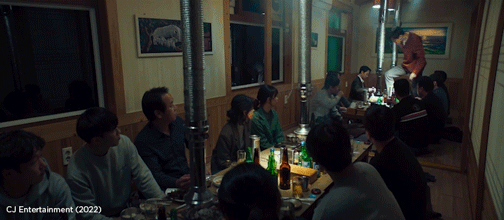


Of all the filmmaking elements, editing is probably the most important when it comes to suspense films. Remember, time is crucial in suspense and editing can manipulate time in significant and interesting ways.
When editing suspense films, your number one mission is to slow things down. The manipulation of time and the delay of events is the definition of suspense. Let’s look at a scene from The Birds, courtesy of Alfred Hitchcock — the master of suspense.
In the film, Decision to Leave follows Hae-joon (Park Hae-il), a married, insomniac detective who is tasked with investigating the death of a man who has plunged from a rocky mountain peak while climbing. When he interrogates the man’s much younger Chinese wife, Seo-rae (Tang Wei), he finds himself as attracted to her as he is suspicious of her. As he digs deeper into the investigation, Hae-joon finds himself lost in a web of deception and desire.
Film editing is important to build the suspense using transition, juxtapositions and the appropriate timing.
0 notes
Text


“In magic, it is more interactive than most other forms. It’s very hard to do magic for yourself, very hard to do that. So, you need feedback. And the one thing you learn in magic, although the props change and although the methods change, you start to develop an intuition for what the audience will be thinking, what they will be paying attention to. But no matter how good your intuition gets, having other people give you feedback is really good.”
Magic, much like film editing, requires the audience to trust you even though, as in a magic trick, the magician/filmmaker is often an ‘unreliable narrator’ – telling us things are true and reliable when they are anything but. Much like Verbal Kint in The Usual Suspects who tells us that “The greatest trick the Devil ever pulled was convincing the world he didn’t exist.“ - Johnny Elwyn, Magic, Movies, and the Art of Film Editing
Editing in Death Proof
To get the “grindhouse” effect that Tarantino wanted he utilized many techniques. First he got the physical copy of the film and physically scratched it all over the place to give the film a grainy feeling. Then he, in grindhouse fashion, spliced scenes out of the film harshly and without warning. The decision to do these things added to the aesthetic of film and gave it a distinctive feel.
The film was edited by the masterful film editor Sally Menke.
#quentin tarantino#death proof#movies#editing#filmediting#film editing#transitions#film transitions#filmmaking
16 notes
·
View notes
Text




Director Ari Aster, really knows how to get inside the audience head, with camera tricks, powerful soundtrack, stellar performances and most of all engaging transitions. In the film Beau is Afraid, he plays with match cuts to illustrate the pass of time, but in a dramatic way, invisible cuts and digital alteration of space and time.
Editor Lucian Johnston plays along with director Aster, in order to deliver a hard to watch film.
54 notes
·
View notes
Text

My love for film transitions make me research online, specially when I see something innovative. DC The Flash is a good example of how a filmmaker can turn around a simple moment and turn it into a wow moment. Editors Jason Ballantine & Paul Machliss made this time travelling flashback/dream sequence into a revealing happening between the same character, one young and the other older.
2 notes
·
View notes
Text

A match cut is a cut between two clips that consistently share one or more qualities of action, composition, content, or subject matter. The adjacent juxtaposition of two clips with shared traits builds a stronger story, whether it is narrative or thematic in nature. A match cut ties those two clips together by placing an edit between the clips at a point in which the shared quality is aligned between the two. This signals to the audience the significance and intention of the shared quality for its narrative purpose in the sequence. It binds together the two clips. — Chris Ace Gates
The match cut could work like a snap in the face for audiences focusing on a scene or a moment that suddenly takes you out of there.
This wonderful transition from Spiderman Across The Verse shows you how popular is this technique, from TikTok videos to animated movies, the use of the match cut is refreshing, but also a powerful way of storytelling.
#filmediting#transitions#movies#editing#film editing#film#across the spiderverse#animated+film#animation
5 notes
·
View notes
Text
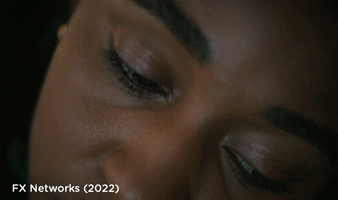

After watching the two seasons of The Bear, I realized how powerful of is the editing of this TV show.
Sometimes, simple cuts between shots can transport you to so many places. Editors Joanna Naugle, Adam Epstein, Nia Imani, and Megan Mancini create something unique in every episode. Metaphorically speaking, we can visualize food for thought thanks to them and the creative team of The Bear. Those moments of contemplation when a chef or anyone involved in the kitchen, the audience can dig inside their head and feel the emotions that go from the chaos of the kitchen to the creation of a delicious dish.
159 notes
·
View notes
Text


A match cut is a cut between two clips that consistently share one or more qualities of action, composition, content, or subject matter. The adjacent juxtaposition of two clips with shared traits builds a stronger story, whether it is narrative or thematic in nature. A match cut ties those two clips together by placing an edit between the clips at a point in which the shared quality is aligned between the two. This signals to the audience the significance and intention of the shared quality for its narrative purpose in the sequence. It binds together the two clips. — Chris Ace Gates
The match cut could work like a snap in the face for audiences focusing on a scene or a moment that suddenly takes you out of there.
There are two moments in episodes 3 and 11 of the show Andor where we connect the drama and tensions of one character with just simple cuts but with a well-planned transition. The droid B2EMO, is presented in episode 3 – “Reckoning” with a simple and effective flashback, and in episode 11 – “Daughter of Ferrix” with a match dissolve, where the truth is revealed about Marva's demise (SPOILER ALERT)
8 notes
·
View notes
Text


Whip pans are used many different ways, and for many different reasons. They are great for any genre of filmmaking as long as you have a plan.
Paul Thomas Anderson, Edgar Wright, Damien Chazelle, Wes Anderson, Sam Raimi, Peter Jackson, Quentin Tarantino, Tina Fey — all of these filmmakers have relied on the effectiveness of a good ol’ whip pan.
A whip pan or swish pan is an intentional camera rotation on the x-axis that is so fast that it creates an often disorienting blur effect. A whip pan or whip shot can be done on a tripod, dolly, gimbal, or even handheld.
This same technique can be used when rotating the camera on the y-axis, but would then be referred to as a whip tilt. - SC Lannom STUDIO BINDER.
In the film Speed Racer (2008) the use of whip pan is effective with seamless green screen effects and digital artifacts that help the filmmakers to tell the story, but also keep the audience engaged.
5 notes
·
View notes
Text


“In magic, it is more interactive than most other forms. It’s very hard to do magic for yourself, very hard to do that. So, you need feedback. And the one thing you learn in magic, although the props change and although the methods change, you start to develop an intuition for what the audience will be thinking, what they will be paying attention to. But no matter how good your intuition gets, having other people give you feedback is really good.”
Magic, much like film editing, requires the audience to trust you even though, as in a magic trick, the magician/filmmaker is often an ‘unreliable narrator’ – telling us things are true and reliable when they are anything but. Much like Verbal Kint in The Usual Suspects who tells us that “The greatest trick the Devil ever pulled was convincing the world he didn’t exist.“ - Johnny Elwyn, Magic, Movies, and the Art of Film Editing
A good example of magic in film editing is these two examples of the film Batman Begins, edited by the award-winning film editor Lee Smith. He uses cuts and artifacts blocking the camera to create a seamless transition.
#christopher nolan
2 notes
·
View notes
Text
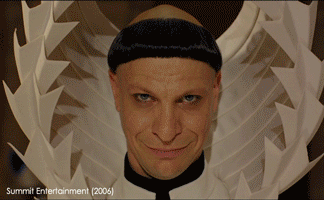
Of the many techniques used to communicate time change in the film, the dissolve transition is among the most versatile. It can be exceptionally noticeable or weaved, almost invisibly, into the narrative. The overlapping images take the viewer to the next scene or image, seamlessly blending the present and future. An effective dissolve can communicate a few different ideas throughout a film. Let's look at some of the different ways filmmakers past and present have used this classic editing technique. - Logan Baker/Premiumbeat
Usually, dissolves are used to show the spectator a past of time; it is safe to save that this effect allows the audience to understand when a period in the life of a character goes through seconds or even minutes.
In the film The Fall, the transition goes beyond of a match cut, and turns into something else, thanks to editors Robert Duffy &
Spot Welders
A match dissolve works similarly to a match cut, but with a gradual transition. Match dissolves utilize the composition of one shot to match with the composition of a second shot.
As the dissolve transitions from the first shot to the second shot, the similar compositions create a match dissolve.
8 notes
·
View notes
Text
A match cut is a cut between two clips that consistently share one or more qualities of action, composition, content, or subject matter. The adjacent juxtaposition of two clips with shared traits builds a stronger story, whether it is narrative or thematic in nature. A match cut ties those two clips together by placing an edit between the clips at a point in which the shared quality is aligned between the two. This signals to the audience the significance and intention of the shared quality for its narrative purpose in the sequence. It binds together the two clips. — Chris Ace Gates.
The match cut could work like a snap in the face for audiences focusing on a scene or a moment that suddenly takes you out of there.



In the Disney+ show Andor, one of the episodes highlights the connection between the same characters, in different period of time. This allow the audience to see the characters journey and how moments can interconnect.
#film editing#filmediting#postproduction#transtions#editing#tvshow#andor s1#diego luna#tony gilroy#fiona shaw
18 notes
·
View notes
Text
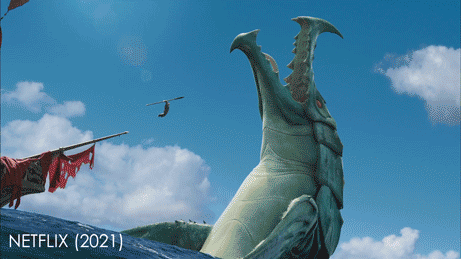
Continuity editing is vital to filmmaking and good storytelling because it helps keep viewers immersed in the film or television show. Filmmakers want audiences to pay attention to the action and dialogue in a story without distractions. When visual details are consistent throughout a scene, the audience can pay full attention.
Netflix film “The Sea Beast” follows this principle of keeping action and storytelling in check using great camera angles and the perfect pacing.
These 4 shots build a simple action, the character stabbed a sea monster and the last shot shows how painful it is.
8 notes
·
View notes
Text
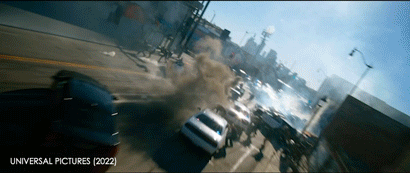
Cuts are used in film to bring us from one image to the next. Unlike dissolves, cuts are instantaneous transitions; to say they don’t occur gradually. This next video from does a fantastic job of examining basic cuts. If you’re new to video editing, definitely give it a watch. - STUDIOBINDER INC.
Matching movement is possibly the most basic kind of match cut. But, it’s precisely what it says. A panning motion in one room cuts or dissolves to panning in another room, suggesting a connection between the rooms. A door closes, and another door opens at the same angle and vantage point, submitting someone moving from place to place, perhaps from an elevator at work to a subway platform heading home. — Vegas Creative Software.
In the film, Michael Bay's Ambulance editors Pietro Scalia, Doug Brandt & Calvin Wimmer, delivered a powerful visual representation of chaos and despair. One cut in particular that impress me the most is when the villains ambush the cops with a remote car holding a mannequin and a machine gun. The shot was done using a drove flying through the smoke and sparkles. The result is an impressive invisible cut.
1 note
·
View note
Text
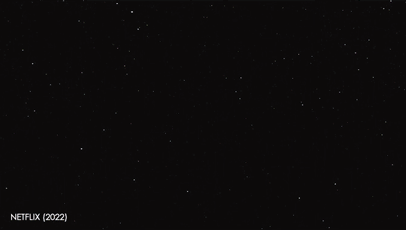
A match cut is a cut between two clips that consistently share one or more qualities of action, composition, content, or subject matter. The adjacent juxtaposition of two clips with shared traits builds a stronger story, whether it is narrative or thematic in nature. A match cut ties those two clips together by placing an edit between the clips at a point in which the shared quality is aligned between the two. This signals to the audience the significance and intention of the shared quality for its narrative purpose in the sequence. It binds together the two clips. — Chris Ace Gates
The match cut could work like a snap in the face for audiences focusing on a scene or a moment that suddenly takes you out of there.
In the film “Blonde” Director Andrew Dominik and Editor Adam Robinson carefully crafted the several transitions that not only connect scenes, but use clever “Leitmotif”.
From a transition of an image of stars in the sky to spermatozoon to tell the story of how Norma Jean got pregnant the first time.
To the transition of Marilyn having a polyamorous relationship with Charles "Cass" Chaplin Jr. and Edward G. "Eddy" Robinson Jr., while the bed turn into a waterfall introducing the film Niagara. Which made a reference to the film's poster.


#film#movies#films#marilyn monroe#netflix#blonde#filmtransition#filmediting#ana de armas#andrew dominik#leimotif
2 notes
·
View notes
Text

Editors Matt Villa & Jonathan Redmond the same team behind the film The Great Gatsby were responsible for cutting the latest film by Baz Luhrmann.
Elvis, tells the story of Elvis Presley narrated by the infamous manager Colonel Tom Parker (Tom Hanks) who help him become famous. Luhrmann use all his traditional techniques, fast cuts, intricate camera movements, impressive cinematography and art direction.
One of the most impressive moments of the film is the transitions between the early moments of Elvis and his residency in Las Vegas. The visual does a match cut (with a 360 rotation) that morphs from the close up of one guitar to the other.
#austin butler elvis#elvis presley#movies#Films#baz lurhman#baz luhrmann elvis#film editing#transtion
2 notes
·
View notes
Text
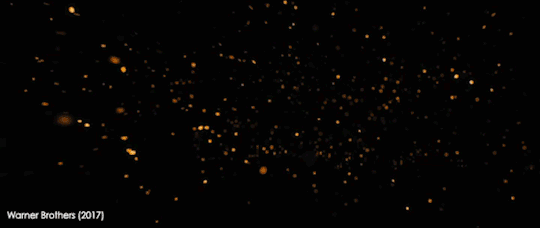
I love invisible cuts or invisible transitions are a type of effect that involved two shots that merge altogether with the use of digital technology. It also requires the use of CGI to achieve realism.
In the film Blade Runner 2029 there is a scene where a shot of fire from a campfire transition and turn into the windows light from the city of Los Angeles, a great achievement from editor Joe Walker.
This transition reminds me of a similar one, made by the Italian editor Cristiano Travaglioli, that turn a shot of trash into a shot with a variety of drugs in the movie Loro.
4 notes
·
View notes